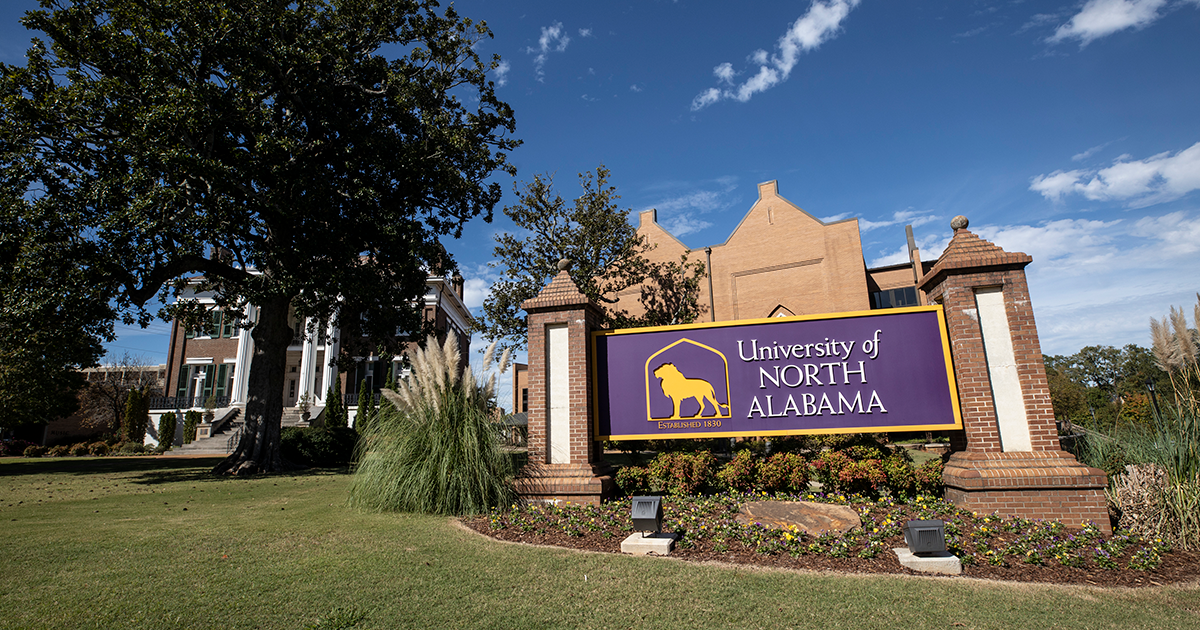
Tva Donates Early Drawings And Photos To The University Of North Alabama
Oct. 18, 2012
Michelle Eubanks, UNA, at media@una.edu, 256.765.4392 or 256.606.2033
FLORENCE, Ala. - The Tennessee Valley Authority has presented the University of North Alabama with a collection of more than 2,800 architectural drawings and photographs detailing the design, construction and operations of the 1918 United States Nitrate Plant No. 2 production facilities and other buildings that became part of the original Muscle Shoals Reservation when TVA was created in 1933. "TVA has been vital to this region and to making the Shoals area what it is today," said Dr. William G. Cale Jr., UNA president. "We are honored by TVA's donation to our library archive collection. This will be an excellent home for these historic items, as they benefit student and faculty researchers for years to come." The nitrate plant, which was built by the federal government for national defense needs during World War I, became the core of TVA's fertilizer program that earned worldwide recognition for advancing fertilizer development and production. The facility, which was named the TVA Fertilizer Development Center, became the National Fertilizer Development Center in 1963. The research and demonstration projects conducted at the pioneering facilities on the Muscle Shoals Reservation from the 1930s through the early 1990s produced major contributions to the modern fertilizer industry. More than 75 percent of the fertilizer products or manufacturing processes still used throughout the world today were developed at the TVA Muscle Shoals facility. Over the years, more than 300 technology patents and more than 700 licenses for their use were developed. The collection of nitrate plant historical documents and photos will be available through the University of North Alabama's Special Collections Department at the Collier Library in Florence, Ala. This is the first time these drawings and photographs are available to the public. They provide insight into the unique construction and materials used to build the complex, as well as the processes for nitrate production. The U.S. Nitrate Plant No. 2 was authorized by the Defense Act in 1916 to produce nitrate for munitions materials for World War I. The war ended just as the facility was completed, and it was not productive again until U.S. Sen. George Norris of Nebraska championed its use as part of the legislation creating TVA. As part of its historic mission, TVA was charged with activating the facilities and producing new fertilizers to help modernize agricultural practices to promote economic recovery for the region during the Depression era. Through the decades, the work of TVA researchers, in partnership with the fertilizer industry, produced many innovations that drew visits and tours of the facilities by officials from around the world. Dr. John Culp, who retired in 1993 after a career of leadership at the TVA fertilizer and agricultural development facilities in Muscle Shoals, said U.S. Nitrate Plant No. 2, coupled with the power from nearby Wilson Dam, served as the seed for creating TVA. "TVA did the analysis that led to the solid and liquid fertilizers that helped the American farmer produce more food and fiber for the Valley, the nation and for the world," Culp said. "We worked with the land grant universities by supplying them with fertilizers to test and then supplied the fertilizer to the industry at-cost to create a market for the new products with the farmers." IMAGES AVAILABLE: Downloadable images from the TVA collection are available from the UNA Photo Archives.